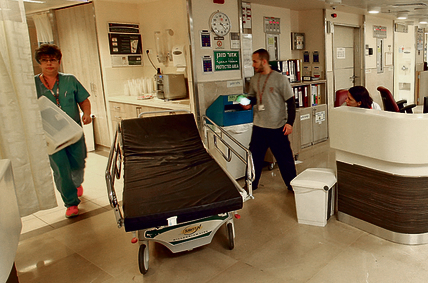
New research finds a 'healthier, but poorer' Israel
According to new data published by the Taub Center for Social Policy Studies, Israel’s education system is improving and unemployment is on the decline, but the future is far from rosy, with authorities failing to prepare to look after an increasingly aging population and a widening poverty bracket after taxes and mandatory outgoings.
While unemployment is on the decline in Israel, while the education system is improving and while Israelis are healthier than ever before, more and more is being spent on health, authorities are not preparing to look after the increasingly aging population, and the rate of poverty in terms of disposable income is still the highest among all the OECD countries, according to a new study published this week by the Taub Center for Social Policy Studies in Israel.
The new findings also reveal that the sources of current economic growth are proving unsustainable. According to the study, entitled State of the Nation Report 2017, in the coming years, a significant proportion of the population is expected to exit the labor market mainly due reaching the age of retirement, and the proportion of workers in the economy, which is now relatively high, is on course to decrease every year. According to estimates, by 2025 the percentage of working-age population (25-64) will reach 42% of the population (currently 45%).
According to the report's authors, the economy may be growing at a good pace, but this growth is not expected to keep up a consistent speed over time. The report concludes a somewhat disappointing growth range for Israel, partly because of a prolonged freeze in most of the business sector. According to the report, Israel ranks 22nd out of 34 OECD countries in GDP per capita.
In addition, the report stated that Israel ranks 52 in the world in the level of difficulty in conducting business, according to the World Bank report for 2016, below most of the OECD countries. This rating points to the need to streamline bureaucracy processes.
Israel is also ranked ninth in the world in life expectancy (about 82), and 10th in life expectancy with good health (71.7). The number of elderly over the age of 70 is expected to double from 610,000 to 1.24 million in 2035, while the rest of the population is expected to grow by only 31 percent.
The data indicates that the fastest growing health problem is diabetes, but on a more positive note it signals a decrease in the rate of heart disease, strokes and congenital malformations.
The rate of expenditure on health is increasing every year.
In other words, those from the wealthier classes spend more money that is less burdensome on their disposable income, while those from the least wealthy classes spend less, which is a heavier expense than their monthly income.
Poverty in Israel is lower than most OECD countries, in terms of income—before taxes and other mandatory payments—but according to an in-depth examination of available income, Israel finds itself in last place alongside Mexico once those payments have been subtracted from gross incomes.
The large difference between these two poverty indices attests to the country's failure to reduce poverty by means of taxation and the social security system, inter alia because of low taxes and large populations characterized by low human capital, low participation rates in the labor market and large families.
Regarding the status of the Israeli teachers and education a significant improvement has been recorded, with the average teacher's wage being higher than that of the average worker.












